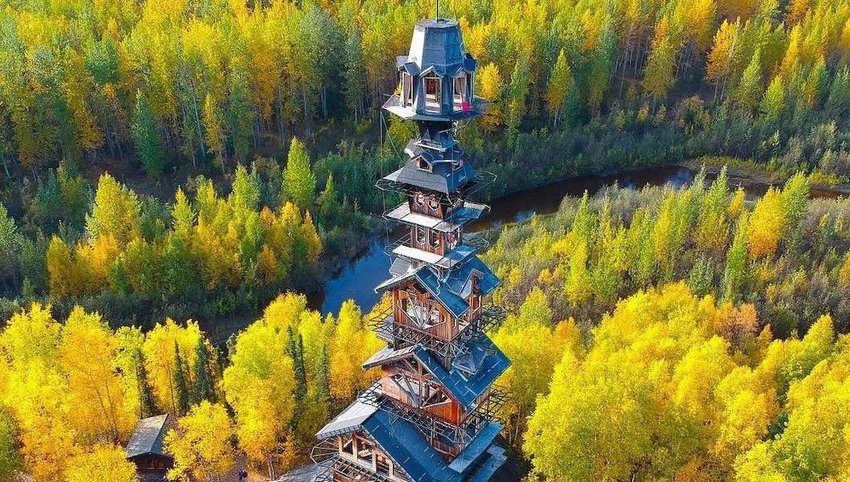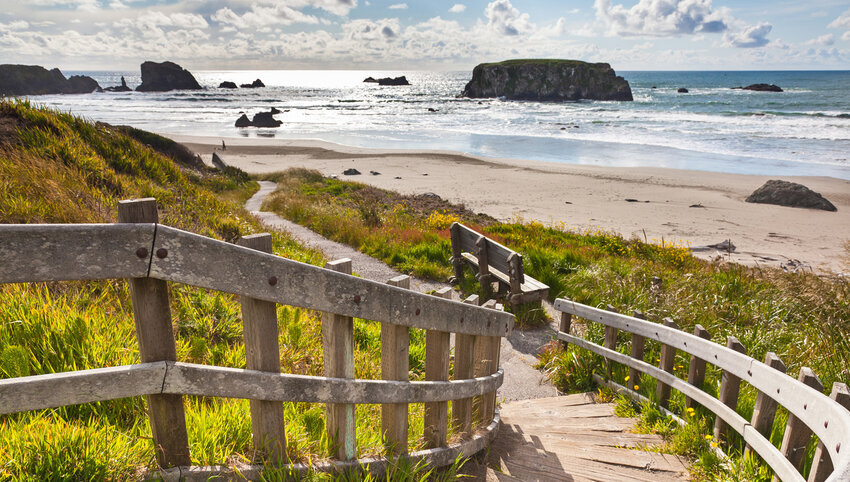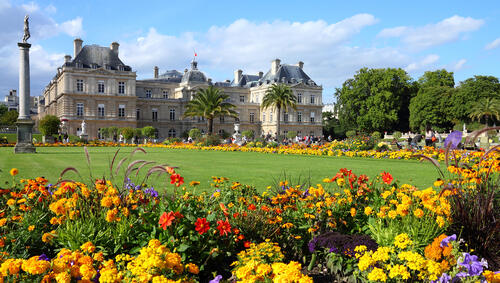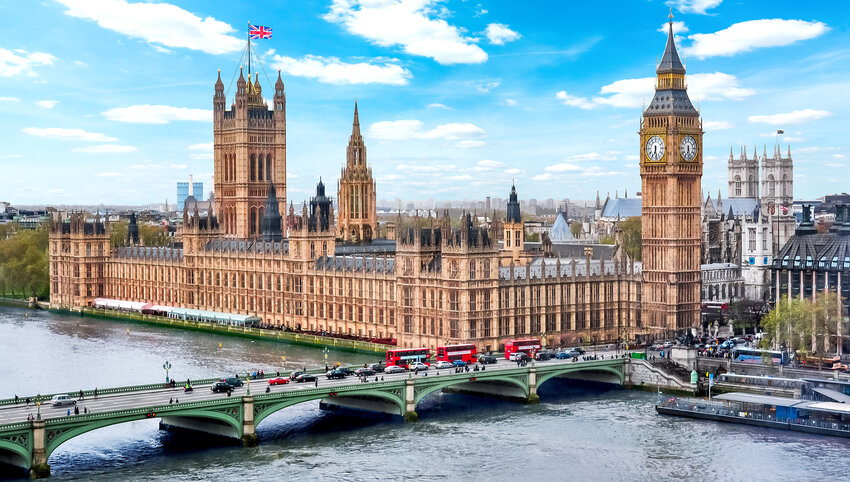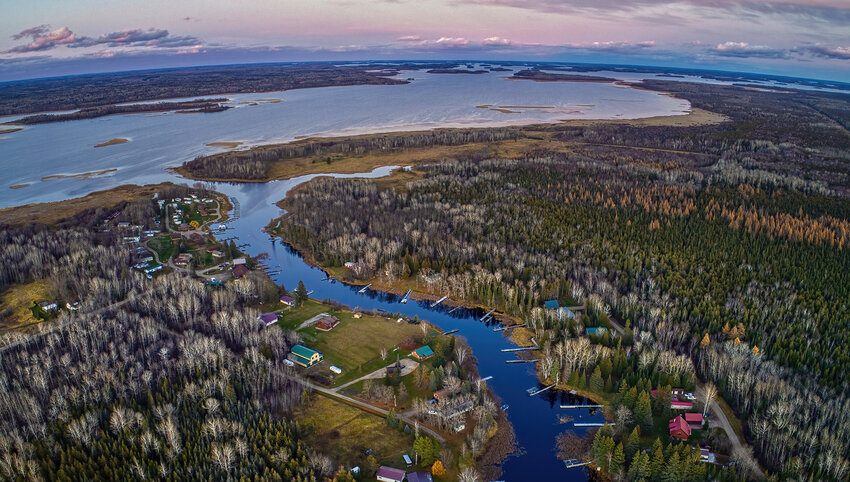As we travel around the United States, we witness fantastic buildings that adorn the country’s cities and towns. These incredible structures all have a story to tell and have been built to honor a culture and represent a time and place that is meaningful to its residents. Let’s take a road trip across America as we explore the coolest buildings in all 50 states.
Alabama - Frank Lloyd Wright Rosenbaum House
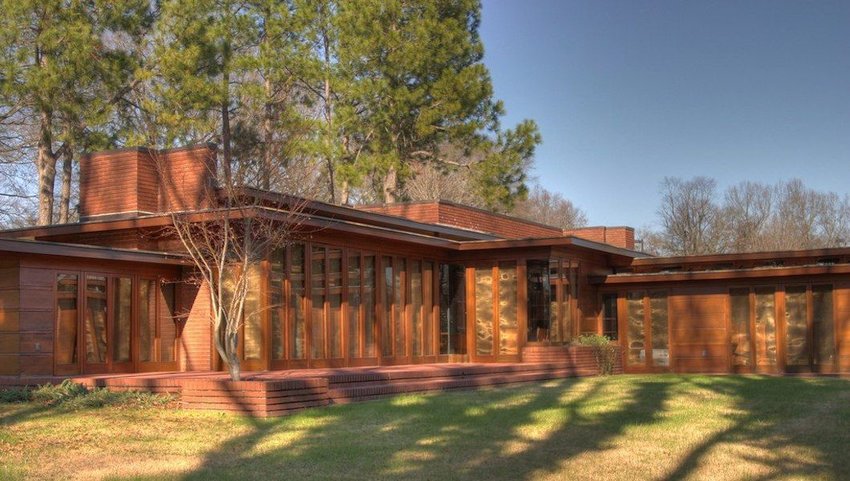
Arguably one of the greatest architects the U.S. has ever produced, Frank Lloyd Wright was a believer in blending his structures into their surrounding environment. This type of "Organic Architecture" symbolized a harmonious meeting of nature and man, and this home in Florence, Alabama is one perfect example of this philosophy.
Alaska – Dr. Seuss House
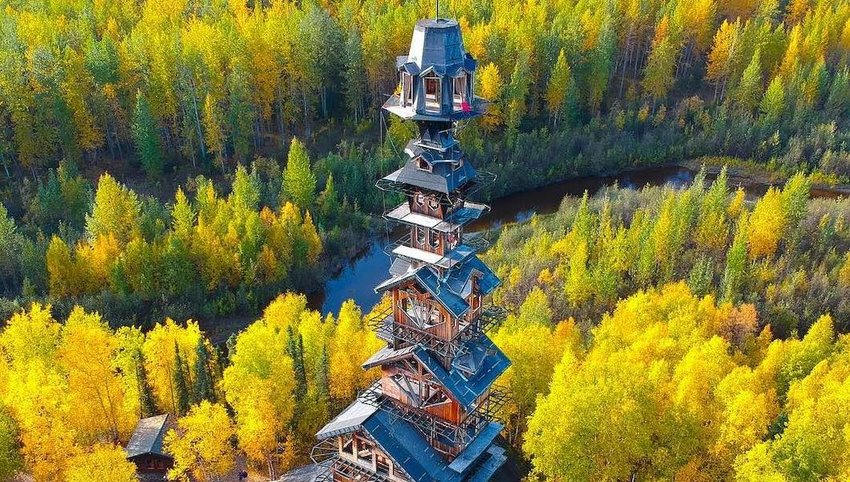
You can easily see how this whimsical house outside of Talkeetna is known to everyone as the Dr. Seuss House. The owner originally planned to build a two-story cabin, but he decided to add another floor and didn’t stop. There are now somewhere between 14 and 17 floors. The best way to see it is by taking a ride on the Alaskan railroad.
Arizona - Chapel of the Holy Cross
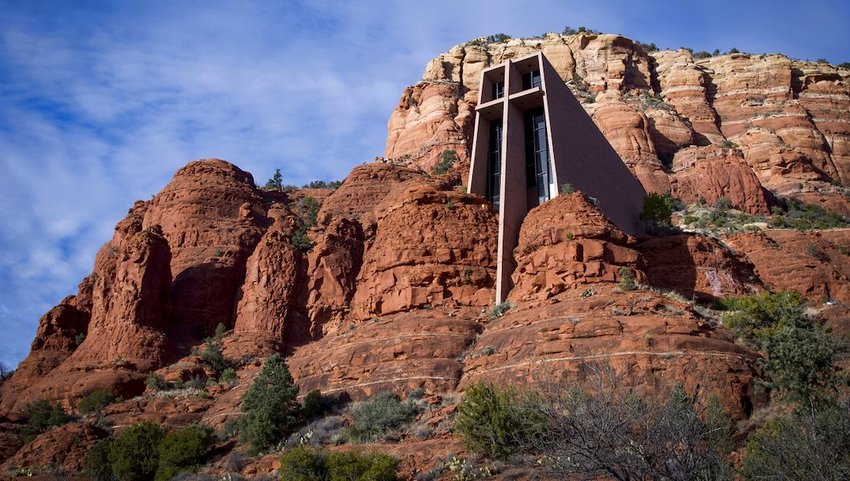
This cool chapel was designed by one of Frank Lloyd Wright’s students — Marguerite Brunswig Staude. The Chapel of the Holy Cross is 4 miles south of Sedona. It juts out from the colorful red cliffs and the large stained-glass windows overlook the Verde Valley.
Arkansas - Crystal Bridges Museum of Modern Art
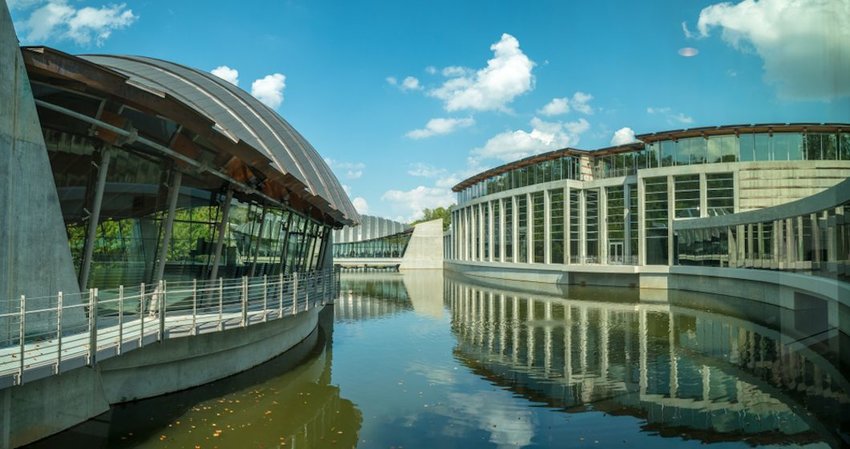
This amazing museum opened in 2005 and was the brain-child of patron of the arts Alice Walton, daughter of Walmart founder Sam Walton. The pavilions are set among ponds and the museum houses amazing galleries and meeting halls. There is also a neat sculpture and walking trail linking the museum to downtown Bentonville.
California - Walt Disney Concert Hall
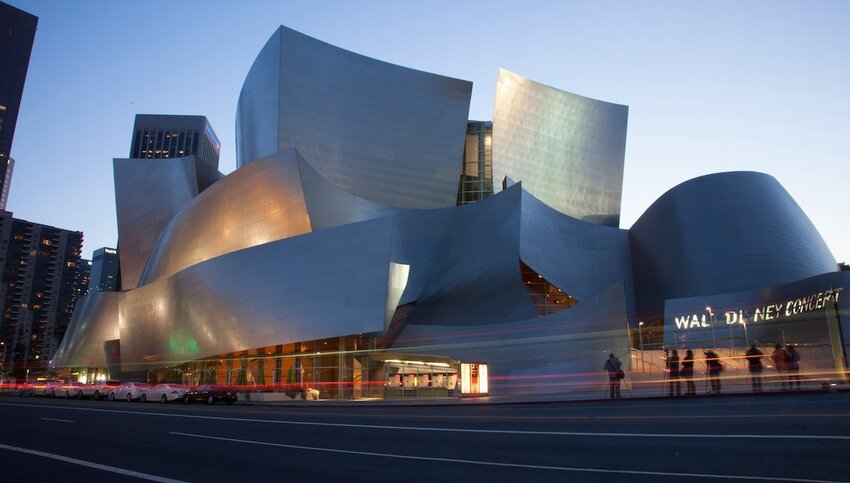
It's nearly impossible to pick just one incredible structure in California. From the Getty House to Coit Tower, many iconic landmarks could have made this list. But the Walt Disney Concert Hall in Los Angeles is a spectacular modern marvel designed by renowned architect Frank Gehry. Outfitted with asymmetrical stainless steel panels that bend and warp like a series of sheets around the exterior, the building hosts the Los Angeles Philharmonic symphony, and is a stunning achievement inside and out.
Colorado - Air Force Academy Chapel
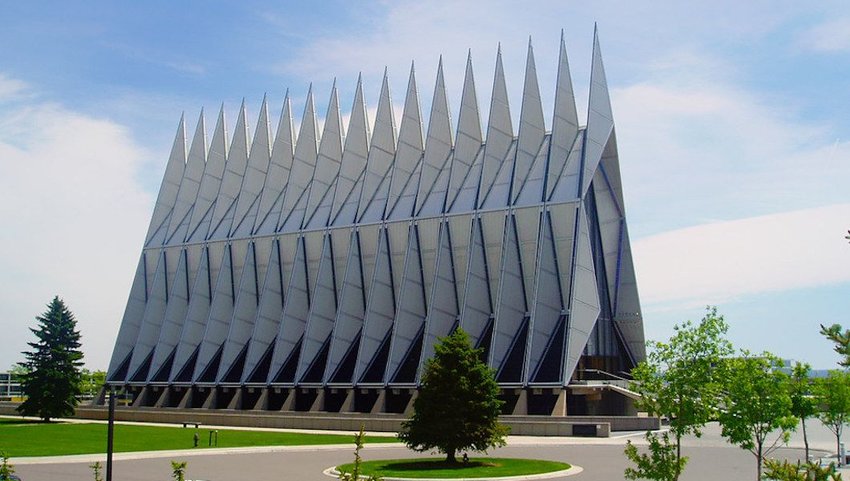
You would not expect to find such a classic example of modernist architecture on a military academy. The United States Air Force Academy Cadet Chapel is an iconic symbol of the Academy and draws visitors from all over the world. It features seventeen spires and its frame is made up of 100 identical 75-foot-long tetrahedrons.
Connecticut - Grace Farms

New Canaan is home to Grace Farms Community Center, an 80-acre preserve set on the grounds of a former equestrian center. The Center is dedicated to the principles of faith, nature, art, community and justice. The winding structure is set in a field surrounded by woods, ponds and wetlands all connected by cool trails.
Delaware - Grand Opera House, Wilmington
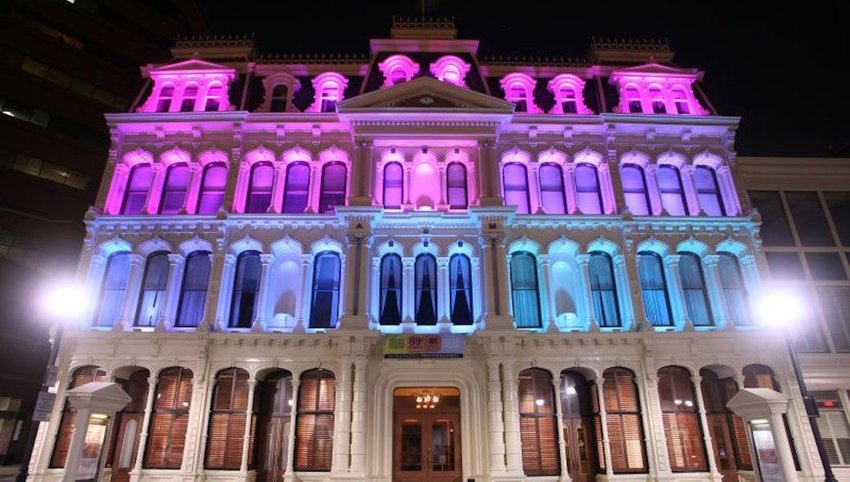
The uniquely-designed Grand Opera House has been the focal point of Wilmington since it opened in 1871. It started out as the home for the Grand Lodge of the Masons. Today, it is a concert venue that plays host to rock, classical and jazz concerts.
Florida - The Salvador Dalí Museum

If you want to see the largest collection of Salvador Dalí's work outside Europe, head to St. Petersburg and check out the Salvador Dalí Museum. The site is the final destination for the private collection of Dali’s work purchased by Reynolds and Eleanor Morse. The museum opened in 2008 and is a must-see stop for visitors of St. Petersburg.
Georgia - Center for Human and Civil Rights
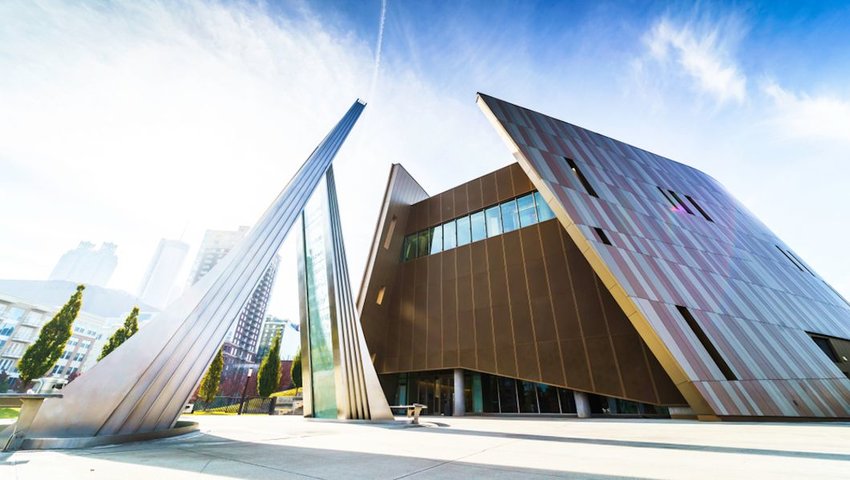
If you're in downtown Atlanta, you can’t miss this cool architectural masterpiece. The National Center for Human and Civil Rights is an engaging cultural attraction that connects the American Civil Rights movement to today’s struggle for global human rights. The building was designed by the same firm that created Smithsonian’s National Museum of African American History and Culture.
Hawaii - USS Arizona Memorial
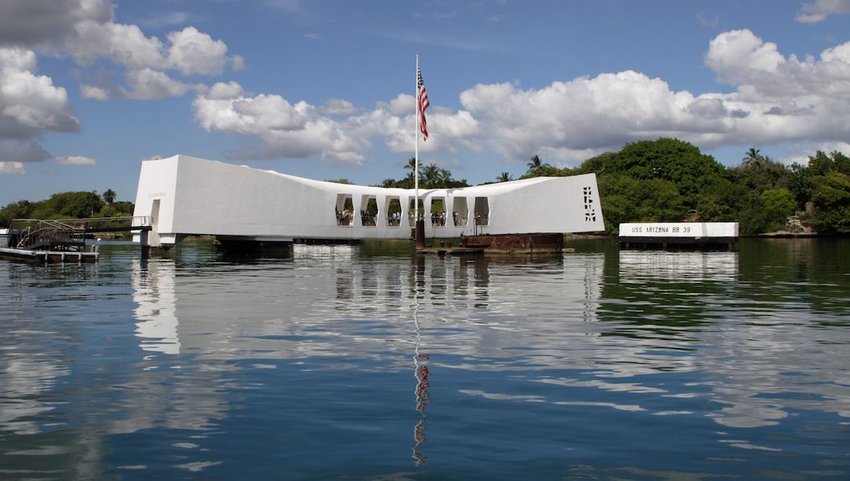
Built in 1962, the USS Arizona Memorial is the final resting place of 1,102 sailors killed in the December 7, 1941 attack on Pearl Harbor. More than 2 million people visit the memorial each year and it’s only accessible by boat. It’s a soul-stirring memorial to fallen veterans that still evokes emotion 80 years after the attack.
Idaho – Idaho State Capital Building
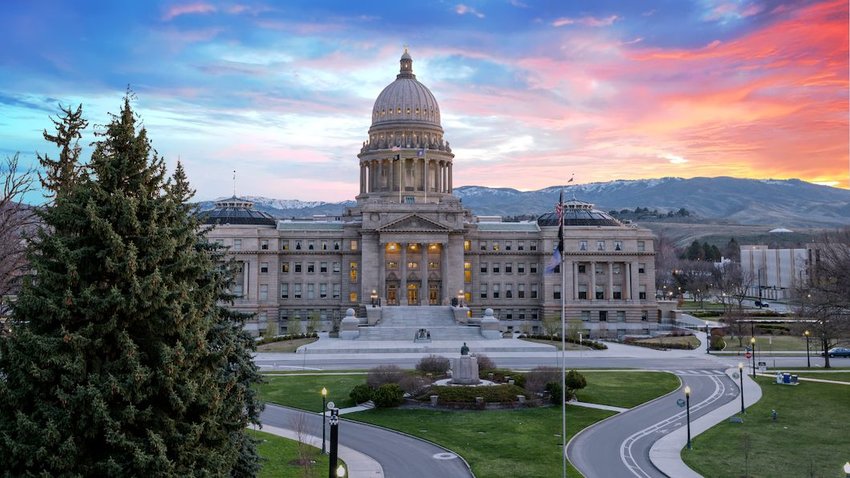
Construction on the Idaho State Capitol in Boise began in 1905, 15 years after Idaho was granted statehood. Lewiston was actually the capital of the Idaho territory when it was established in 1863, but the lawmakers moved to Boise in 1864. The capital building was finished in 1920 and as with many state capitals building, used classical styles of construction to represent authority and power.
Illinois - BAPS Shree Swaminarayan Mandir
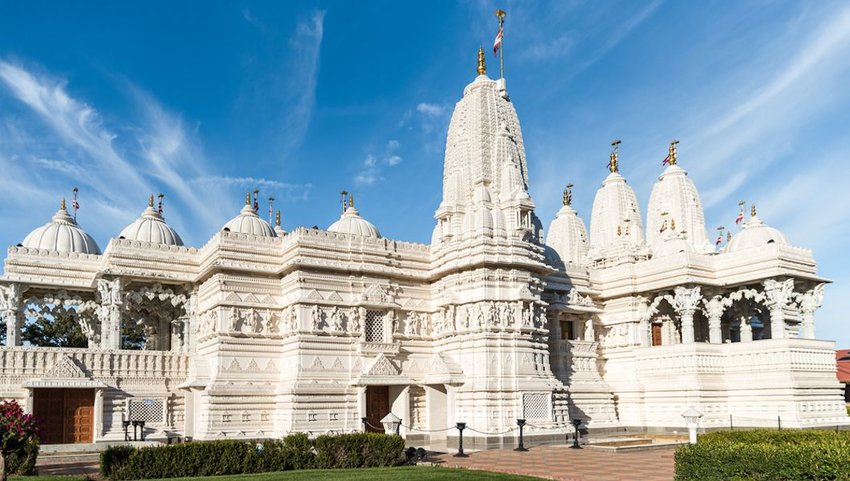
Opened in 2004, the BAPS Shree Swaminarayan Mandir in Bartlett is the largest traditional Hindu temple in the US. It was constructed according to ancient Hindu architectural design texts known as the Shilpa-Shastras. The finished pieces were brought from India after they were carved from Turkish limestone and Italian marble and the temple was built by 1,700 volunteers.
Indiana - St. Meinrad Archabbey
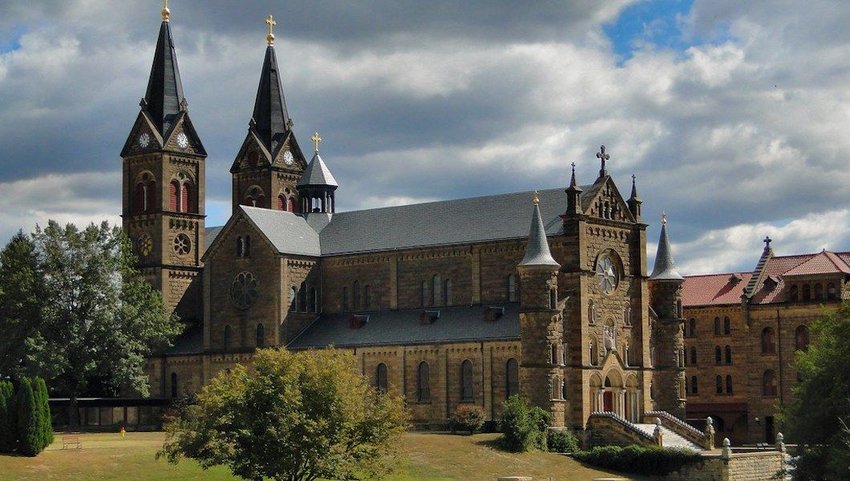
The Archabbey in St. Meinrad was founded in 1854 by monks from Einsiedeln Abbey in Switzerland and is home to about 98 monks. It’s named after a 10th-century monk — St Meinrad. The church is one of only two archabbeys in the US and one of nine on the planet. Visitors can have the chance to pray with the monks as part of the abbey tour.
Iowa - Visual Arts Building, University of Iowa

It is fitting that the coolest building in Iowa is the Visual Arts Building on the campus of the University of Iowa. Students and visiting artists exhibit their craft ranging from ancient metalsmithing techniques to leading-edge VR technologies. The original arts building was destroyed in a flood and was replaced by this amazing building in 2008.
Kansas – Topeka High School
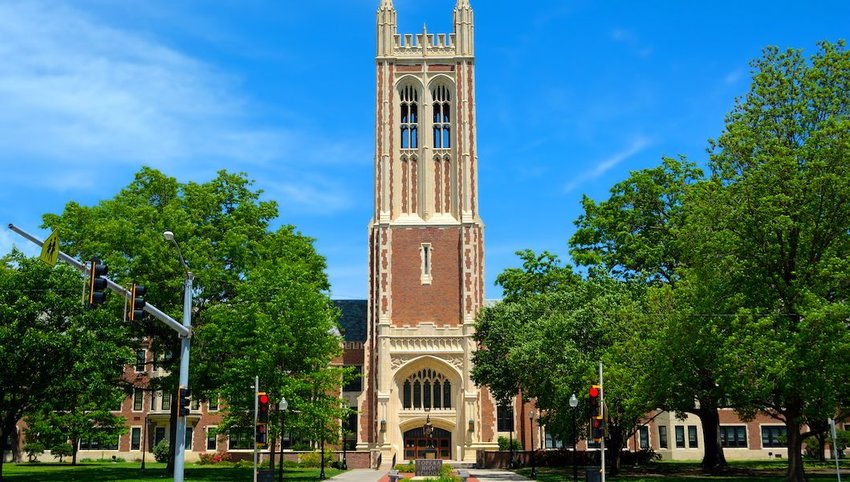
It's hard to believe that a high school would be named one of the "8 Wonders of Kansas Architecture" by the Kansas Sampler Foundation. Topeka High School is an impressive Gothic tower that stands beside many other architectural masterpieces that grace the Topeka skyline. It was completed in 1931 and became the first $1 million high school west of the Mississippi. If you visit, make sure to check out the English Room; it’s reminiscent of an Elizabethan withdrawing room complete with a stone fireplace and chandeliers. To stay in theme, the library is modeled after Henry VIII's Great Hall at Hampton Court Palace.
Kentucky - St. Mary’s Cathedral Basilica of the Assumption

The coolest building in Kentucky was actually inspired by one of the most recognizable churches in the world — Notre Dame cathedral in Paris. St Mary’s Cathedral Basilica of the Assumption in Covington is one of the few classic examples of Gothic architecture left in the U.S. Construction of the basilica began in 1894 and it opened in 1915. It was built using the best materials available in the world and the massive stained-glass windows depict stories of the Bible. The sheer craftsmanship, amazing organs and grandeur will take your breath away.
Louisiana - Louisiana Old State Capitol
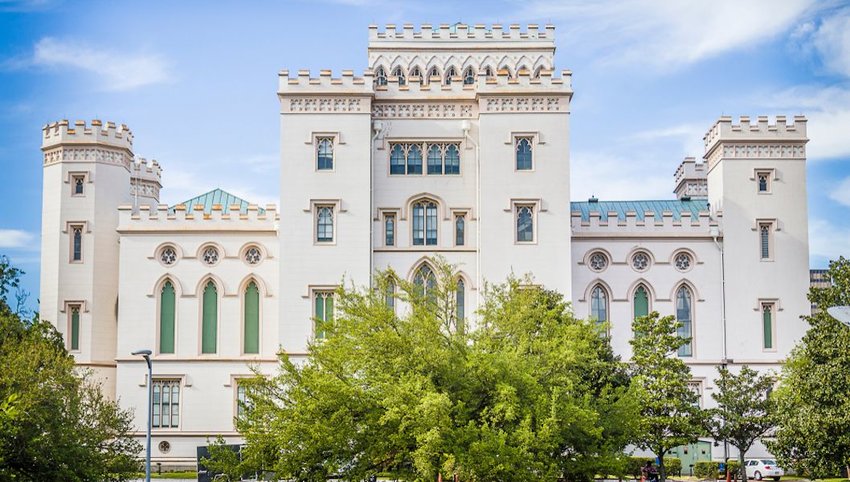
Many locals call the old Louisiana State Capitol the "Louisiana Castle" because it was built to both look like and function as a castle. It was built to house the state’s lawmakers, which it did from the mid-1800s until the current capital building was built in the early 1930s. It now stands as a museum.
Maine - Portland Head Lighthouse
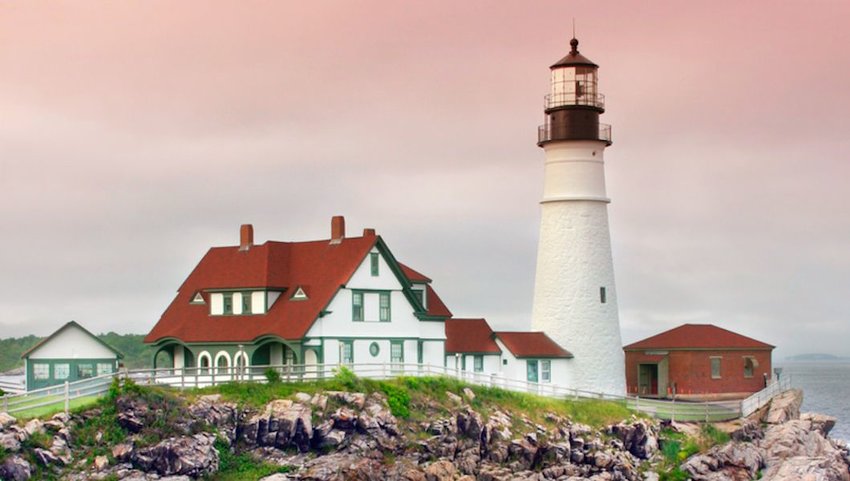
Especially when shrouded in fog, the Portland Head Lighthouse is just plain cool. It sits on a head of land at the entrance of Portland Harbor which serves as the primary shipping lane in and out of the harbor. This lighthouse, circa 1791, is the oldest in all of Maine.
Maryland - George Peabody Library
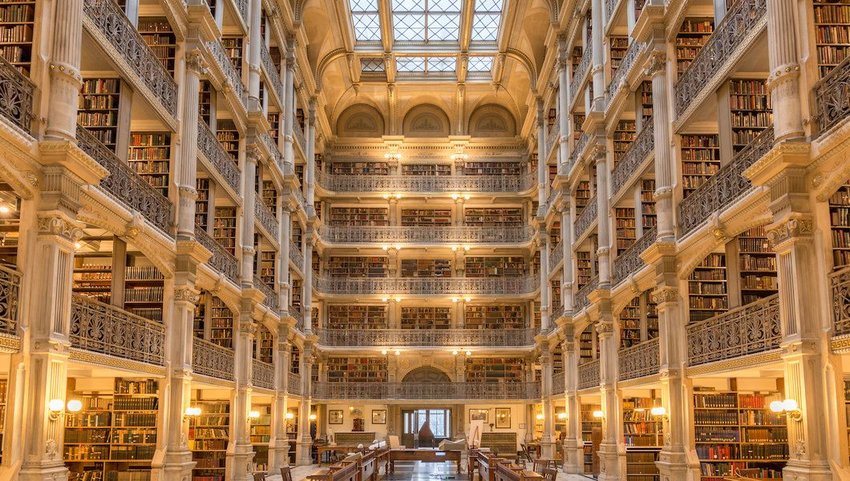
A trip to Baltimore is not complete without a trip to the George Peabody Library, aka the “cathedral of books.” The library, part of Johns Hopkins University, opened in 1878 and features a stunning architectural interior and impressive collection of books. The amazing Peabody stack room has five tiers of cast-iron balconies that rise to a skylight that runs the entire length of the room.
Massachusetts - MIT Stata Center
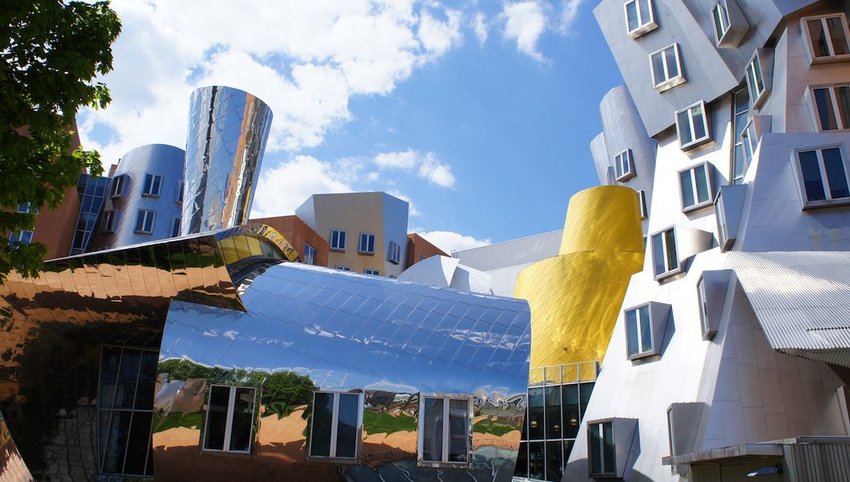
You might think that you've had one too many when you take your first look at the Ray and Maria Stata Center on the campus of MIT. This building serves as an academic hub and houses computer science students and faculty. Completed in 2004, the Strata Center is the area’s most recognizable landmark. It was built where famed WWII Building 20 used to stand when it served as a breeding ground for many groundbreaking wartime concepts.
Michigan - Grand Hotel
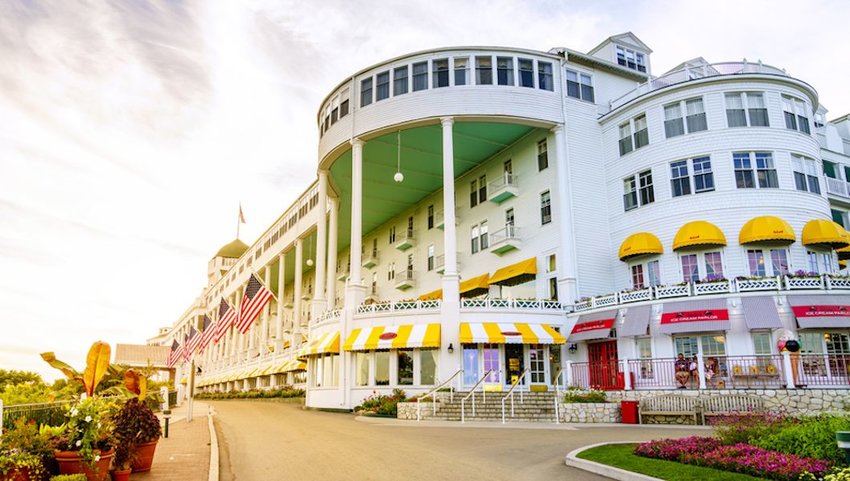
The Grand Hotel on Mackinac Island is a cool example of the wooden Victorian beach resorts of a bygone era. Sitting majestically on Lake Huron, this nostalgic 1887 hotel was built in just 93 days and features the world’s largest three-story porch which looks out on the Mackinac Bridge—the longest suspension bridge in the Western Hemisphere.
Minnesota – Cathedral of St. Paul
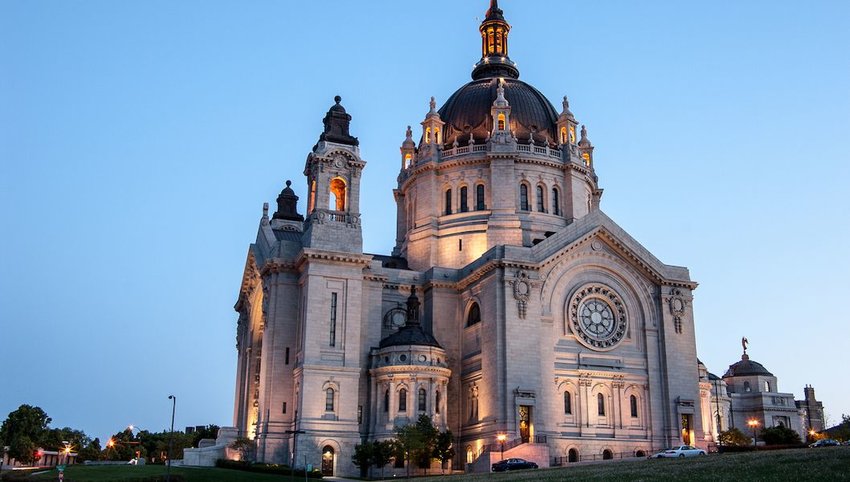
St. Paul’s is such an immense church that they named the mound it sits on Cathedral Hill. Its copper-clad dome dominates the landscape. This architectural wonder of granite masonry and 24 stained-glass windows is a must-see stop for anyone visiting St. Paul. The cathedral is so monumental that the US Council of Bishops proclaimed it as the National Shrine of Apostle Paul.
Mississippi – Longwood House
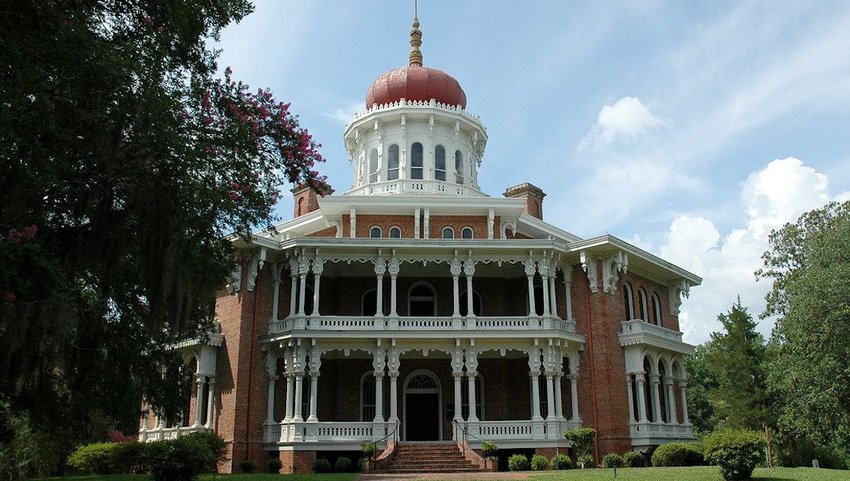
Longwood, affectionately known as “Nutt’s Folley,” is the largest standing octagonal house in America. Construction of the home of cotton planter Dr. Haller Nutt began in the late 1850s, but work was halted in 1861 at the start of the American Civil War. Dr. Nutt died in 1864, leaving the home incomplete. In the end, Longwood survived abandonment and neglect to became a six-story, 30,000 square foot Oriental Revival Style mansion with a domed cupola, 32 rooms, 26 fireplaces, 115 doors, and 96 columns and is still one of Natchez' most popular attractions.
Missouri - Gateway Arch
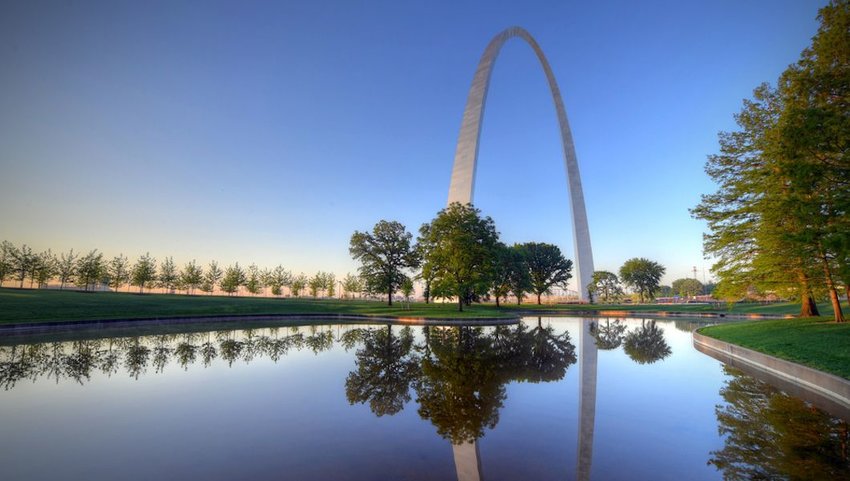
The tallest free-standing arch in the world deserve its recognition. The 630-foot monument turned national park was complete in 1965 as a monument to recognize the westward expansion of the United States. Set on the Mississippi River, it's an iconic part of St. Louis, and a tribute to the American spirit.
Montana – Cathedral of St. Helena

The Cathedral of Saint Helena was modeled by architect A.O. Von Herbulis after Vienna’s neo-Gothic church, Votivkirche. Construction began in 1908 and the church held its first mass in 1914. The impressive spires rise 230 feet above the street and can be seen from all parts of Helena. The stained-glass windows were made in Bavaria and shipped to Helena. They tell the Christian story from the fall of Adam and Eve to the early 20th century.
Nebraska - Holy Family Shrine

Sitting thoughtfully among the prairie grasses of East Central Nebraska stands a really neat piece of architecture—the Holy Family Shrine. It was designed as a place of reflection and worship and features crisscrossing wood beams over glass. This forms a remarkable, ever-changing study in light and shadow. In an effort to connect visitors with nature, it was designed to have water flow freely into and through the building, giving the feeling of a true spiritual connection.
Nevada - Cleveland Clinic Lou Ruvo Center for Brain Health
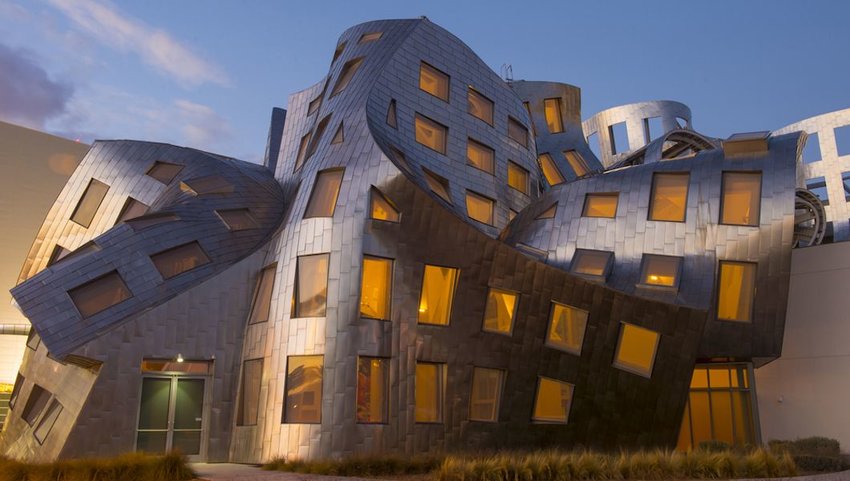
The coolest building in Nevada is actually part of the Cleveland Clinic system. The Lou Ruvo Center for Brain Health opened in 2010 and was designed by the world-renowned architect Frank Gehry. Keep Memory Alive aka KMA, is a big part of the clinic and was founded by Larry Ruvo in memory of his father, Lou Ruvo, a victim of Alzheimer's Disease.
New Hampshire - Searles Castle
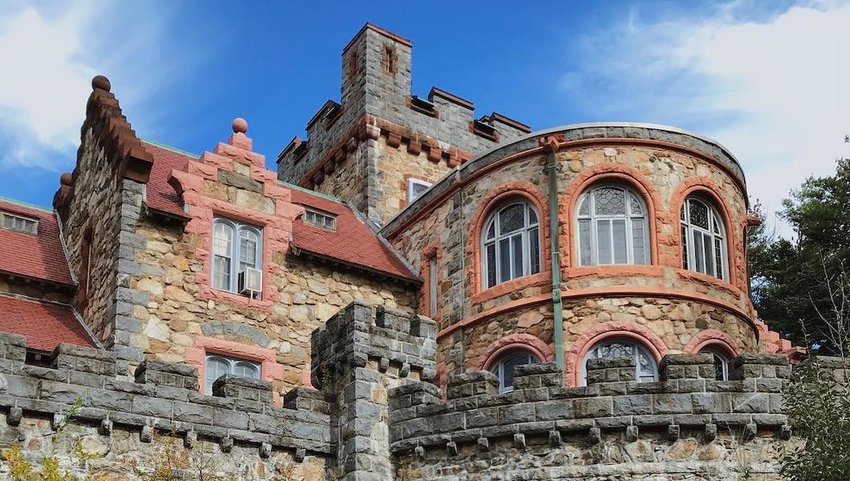
Windham is where you can find the Searles Castle. It was commissioned by Edward Searles and construction began in 1905 and finished 10 years later. Searles’ goal was for the castle to be a replica of Oxfordshire’s Stanton Harcourt, a medieval manor. This historic New Hampshire landmark served as a school until the 1970s but now is rented out for weddings, showers, anniversaries and other special occasions.
New Jersey - Cathedral Basilica of the Sacred Heart
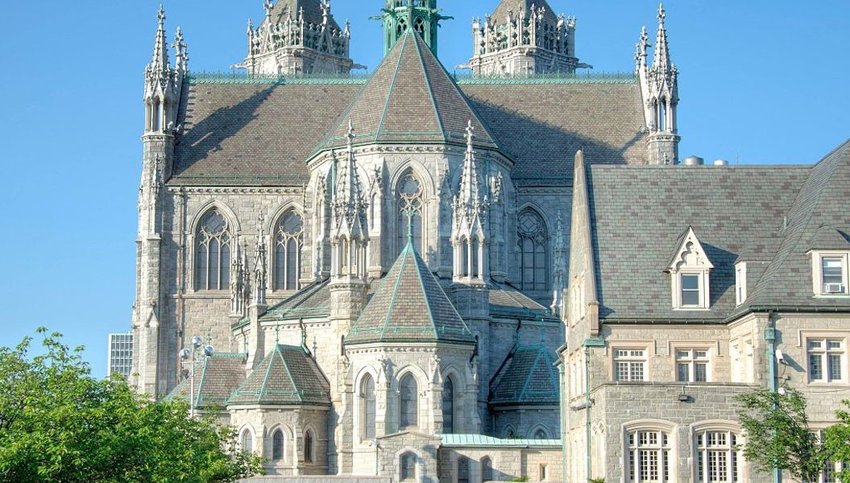
The Cathedral Basilica of the Sacred Heart was completed in 1945 and was funded entirely from contributions from the Italian-American Catholic immigrants who worked and lived in the city in the early 20th-century. The architects designed the orientation of the towers to provide a link from the church to the downtown area. A strange twist in design features the use of French Gothic influences on the interior of the cathedral instead of the traditional English-Irish Gothic style of the day.
New Mexico - Pueblo de Taos
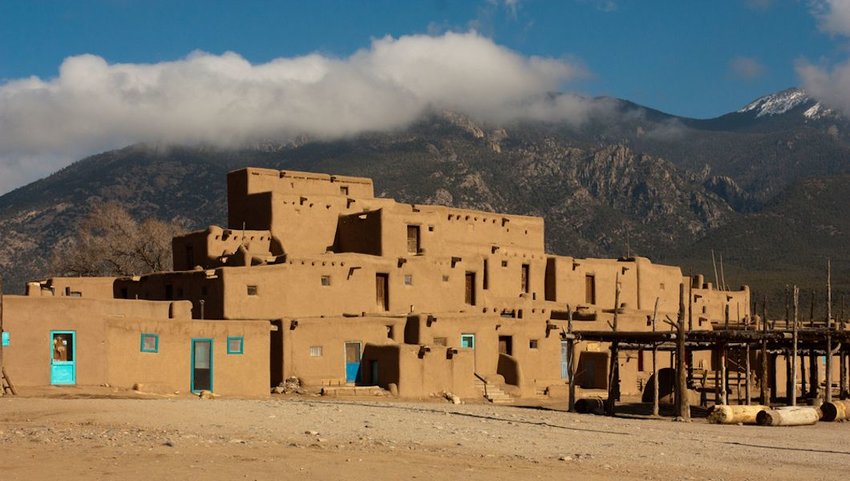
Located on the Rio Pueblo, Pueblo de Taos is a living Native American community that was built in terraced tiers. It contains a multi-storied complex of adobe dwellings and ceremonial buildings. Before the first Spanish arrives in 1540, Pueblo de Taos was a center of trade. This cool traditional community was designated a UNESCO World Heritage Site in 1992.
New York - One World Trade Center
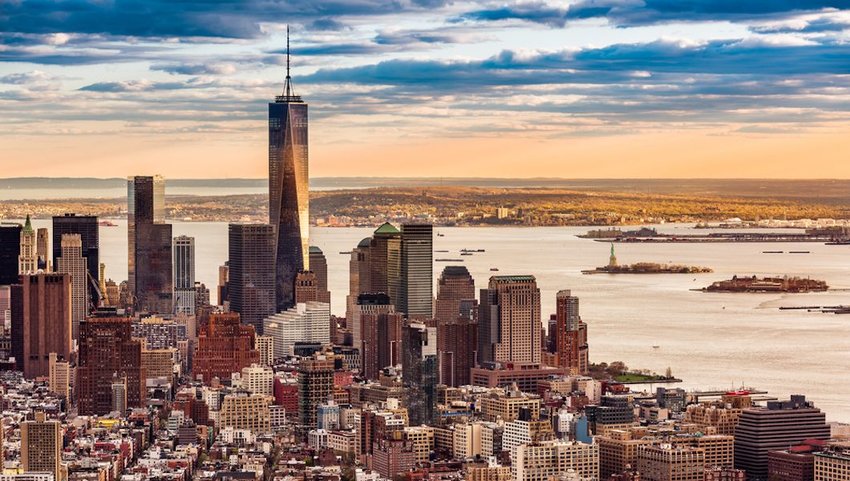
One World Trade Center aka Freedom Tower, is the main building of the rebuilt World Trade Center Complex that was destroyed on 9/11. One WTC is the tallest building in the United States, the tallest building in the Western Hemisphere, and the sixth-tallest in the world. It was designed by the same firm that planned the Burj Khalifa in Dubai, the tallest building in the world. The 104-story super scraper opened in 2014 and dominates the skyline of the Big Apple.
North Carolina – Biltmore Estate
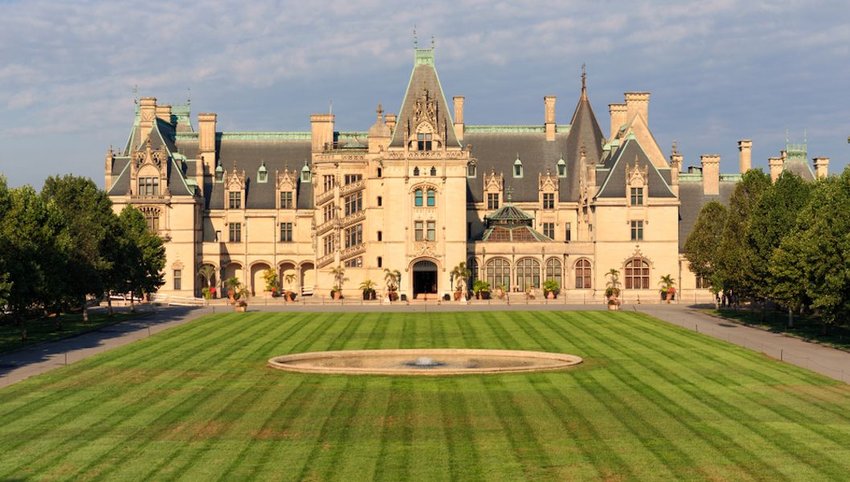
Built from the vision of George Vanderbilt, the Biltmore Estate is America’s largest home. This massive manor was completed in 1895 and is a French Renaissance chateau complete with 250 rooms full of the Vanderbilt family’s original collection of furnishings, art and antiques. More than 1.5 million people trek to Asheville each year to visit the estate and its legendary gardens designed by the father of American landscape design, Frederick Law Olmsted.
North Dakota - Scandinavian Heritage Park
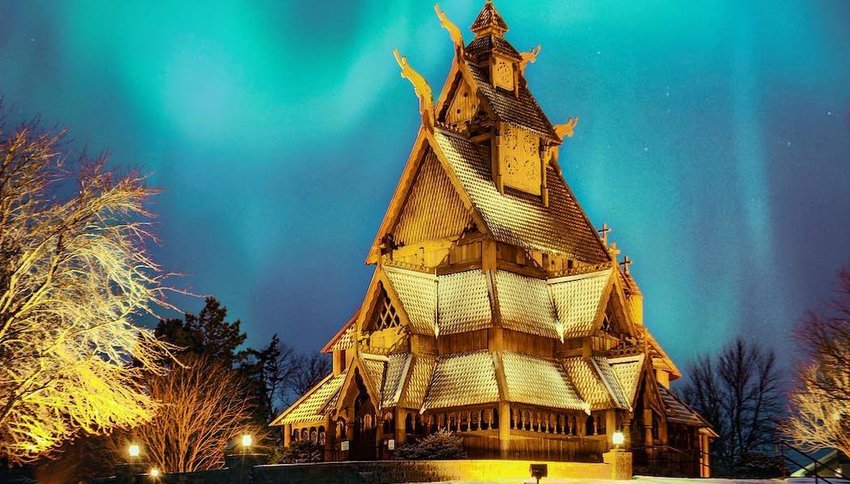
Minot has a park that commemorates the heritage of Scandinavian countries whose ancestors helped settle the Dakota territories. The Heritage Park was established in 1988 and features remembrances and replicas from Norway, Sweden, Denmark, Finland and Iceland. It is believed to be the only park in the world representing all five Nordic countries. The park is supported by the Scandinavian Heritage Association and Norsk Høstfest, Minot’s annual Norwegian Autumn Festival.
Ohio - Longaberger Company Headquarters
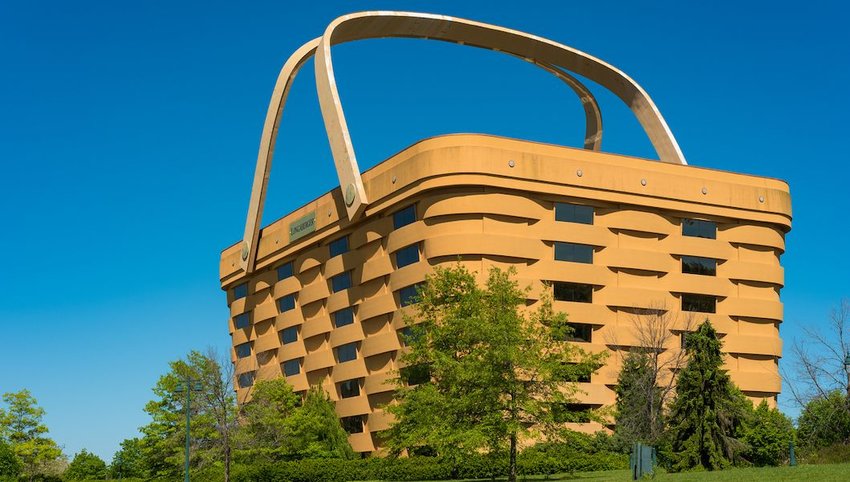
Newark is the home of the headquarters of The Longaberger Company, a world-leader in quality hand-made baskets. It is fitting that their headquarters is built in the shape of the world's largest basket. This cool novelty is a must-see destination for those passing through the area. Sadly, the company no longer uses the building as an office and it has been vacant since 2016.
Oklahoma – The Gold Dome
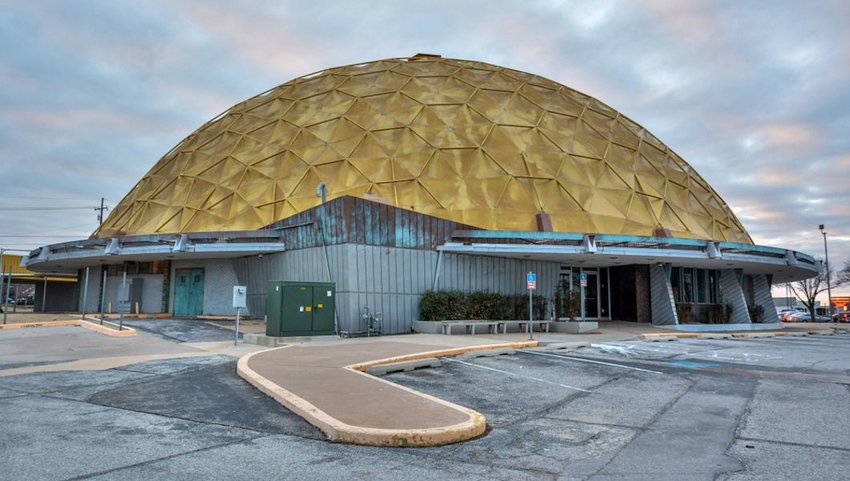
If you happen to be cruising along nostalgic Route 66 in Oklahoma, check out the Gold Dome in Oklahoma City. This geodesic dome was built in 1958 as the home of Citizens State Bank. At the time, the Gold Dome was only the fifth geodesic dome constructed in the world and the first to be used as a bank. This 27,000 square foot structure cost a cool $1 million to build. In 2001, the bank no longer wanted to stay in the dome and efforts to demolish the building grew momentum. The final fate of the dome is in question, but there is hope that this landmark can be saved.
Oregon – Portland's Union Station
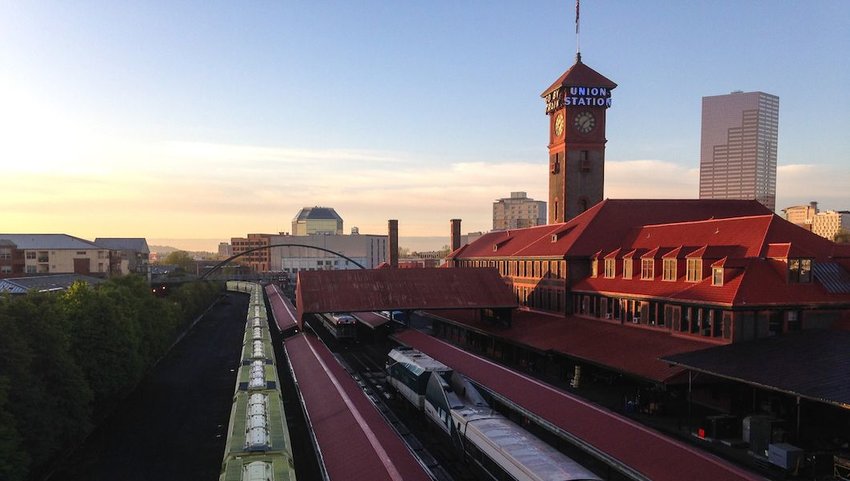
Near the west shore of the Willamette River, you will find Portland’s Union Station. It serves as a train station and also contains offices on the upper floors, as well as a restaurant and piano bar on the ground level. The original plans were drawn up way back in 1882 and rail service through the station began in 1896. The cool feature of the station is its 150-foot-tall Romanesque Revival clock tower that reads “Go by Train” on two sides and “Union Station” on the other two.
Pennsylvania - Fallingwater House
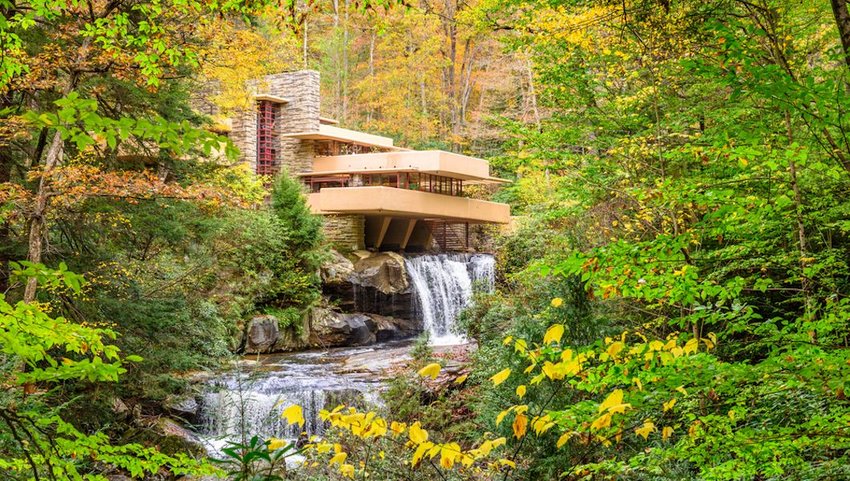
One of Frank Lloyd Wright’s most famous works is located in the greater Pittsburgh area. Mill Run is home to Fallingwater, a home that looks like it’s floating above a 30-foot waterfall. Wright designed it in 1935 and it was completed in 1937. The house is an architectural marvel as it seems to be part of the natural landscape complete with gravity-defying cantilevered balconies.
Rhode Island – The Breakers
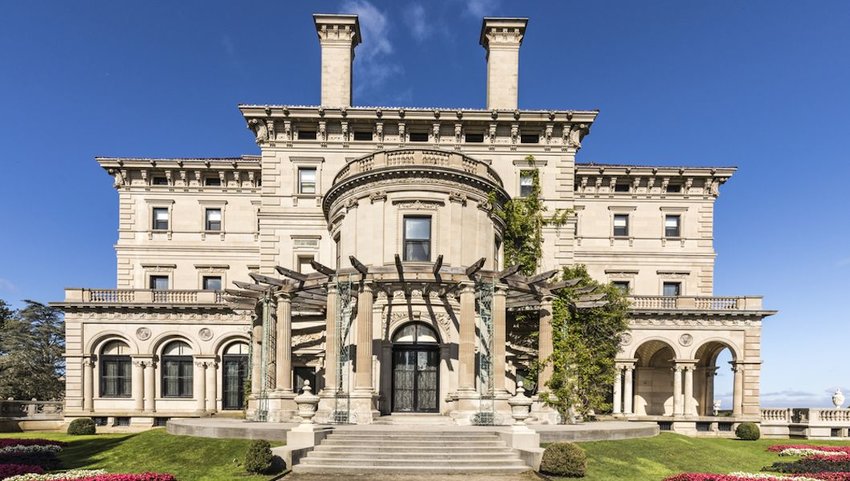
There doesn’t seem to be a shortage of mega-mansions in Newport County. The coolest of these over-the-top palatial “summer cottages” is the Breakers. This home symbolizes the social and financial preeminence of the Vanderbilt family who built the mansion. Architects were tasked with designing an Italian Renaissance-style palace inspired by the 16th-century palazzos of Genoa and Turin. The manor was completed in 1895 and after the death of the last remaining Vanderbilt associated with the Breakers, it’s now in the hands of the Preservation Society of Newport County and is the most visited attraction in Rhode Island.
South Carolina – The Citadel
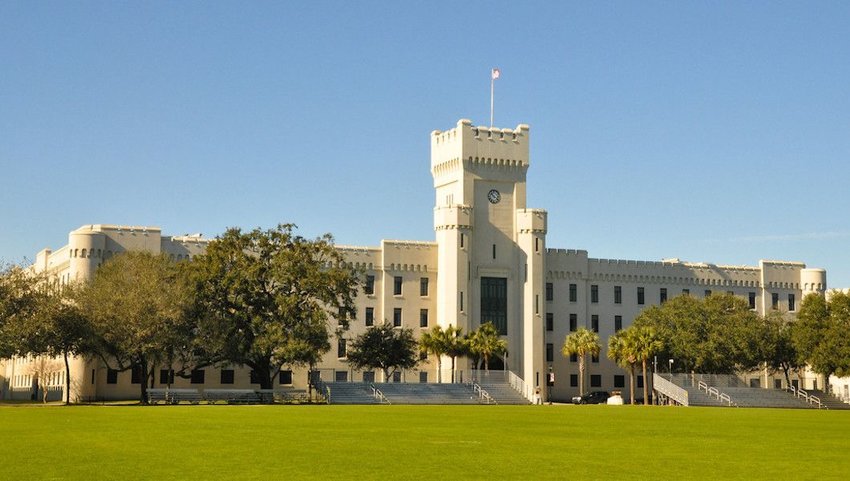
The Military College of South Carolina aka The Citadel is a state-supported college in Charleston and is one of six senior military colleges in the U.S. The most recognizable building on its campus is the Padgett-Thomas Barracks, named after Colonels J.G. Padgett and John Pulaski Thomas, who both were graduates and trustees. The barracks house the Regimental Staff, Second Battalion and the Regimental Band and Pipes.
South Dakota - The World's Only Corn Palace
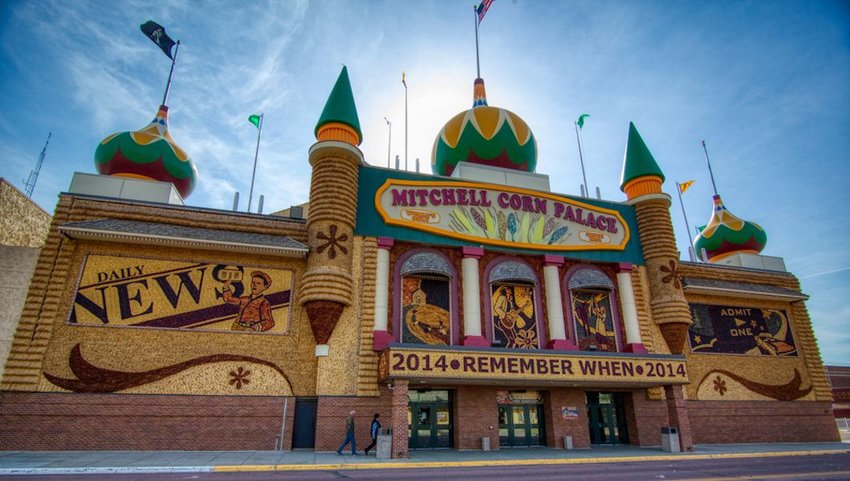
The World's Only Corn Palace or the Mitchell Corn Palace, is a quirky, but cool multi-purpose arena in Mitchell. It was built in the Moorish Revival style and is adorned with crop art made from corn and other grain that features constantly-evolving design. The Corn Palace hosts concerts, sports events, exhibits and other community events like the Corn Palace Stampede Rodeo in July and the Corn Palace Polka Festival in September.
Tennessee - The Parthenon
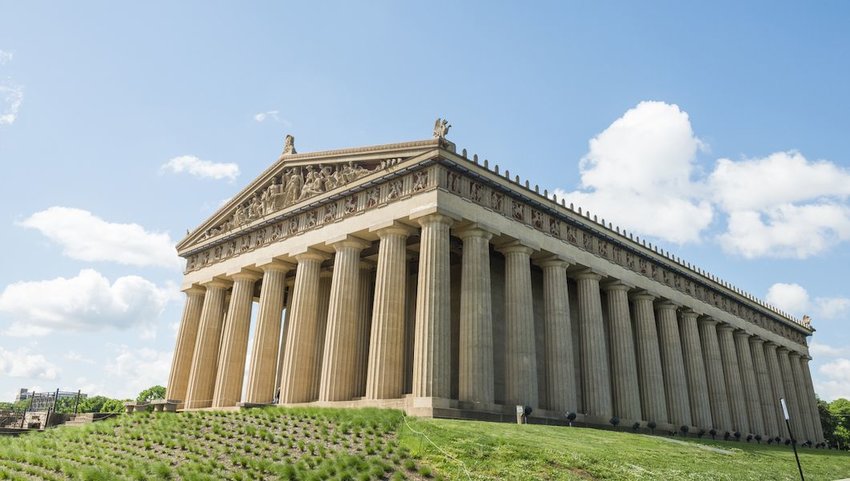
You don’t have to travel to Athens to visit the Parthenon. Just head to Nashville’s Centennial Park and see the full-size replica of the ancient landmark. The original Parthenon was part of the state’s Centennial Expo in 1895-97 and was so popular, they left it after the expo closed. The original structure fell into ruin and city officials decided to replace it with the current Parthenon. In 1990, a 42-foot-tall statue of Athena was added to the temple's interior.
Texas – Mission San Jose
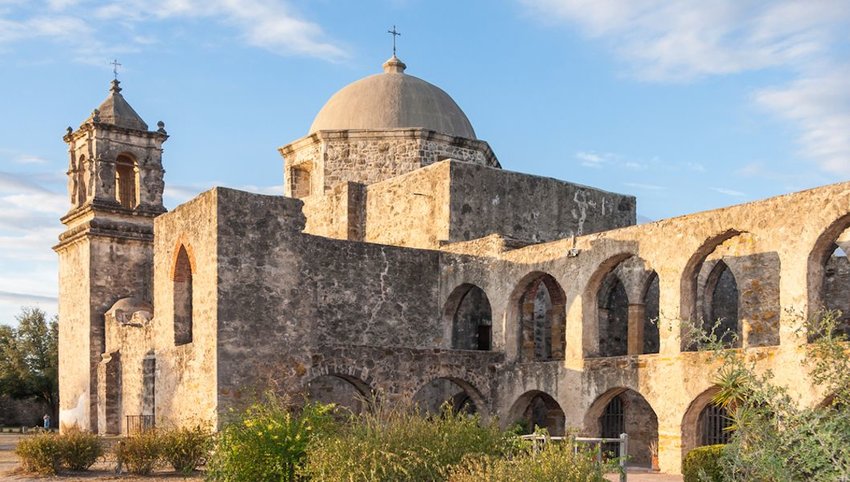
If you visit Texas, expect to see a lot of missions—they are everywhere. But if you want to see the coolest one, check out the “queen” of all the San Antonio missions—Mission San Jose. Once the heart of a vibrant Spanish community founded in the early 18th century, San Jose attracted people from all over the area. The church, which still stands, was built in 1768.
Utah – The Salt Lake Temple
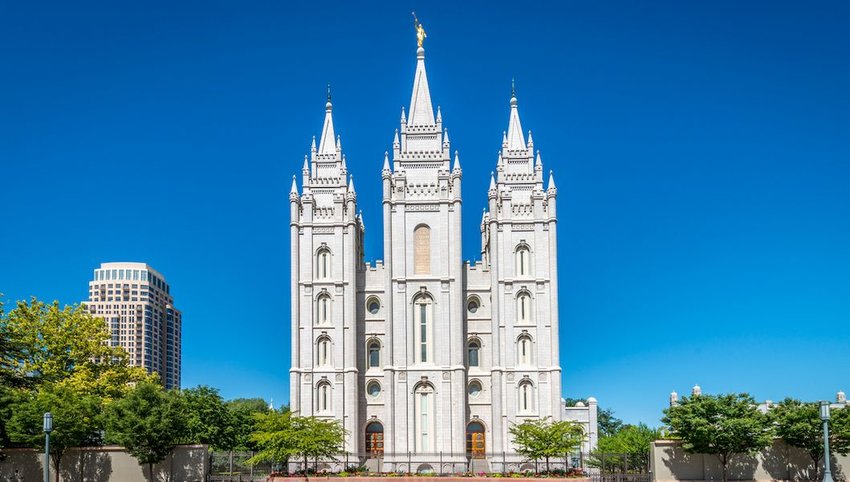
The LDS Temple in Salt Lake City was dedicated in 1893 and took 40 years to complete and it’s only the fourth temple built since the Mormon exodus from Illinois, in 1846. The temple was constructed with large blocks of quartz monzonite that had to be hauled 20 miles by wagon from Little Cottonwood Canyon. The temple grounds are open to the public, but the temple itself is not.
Vermont – The Dog Chapel
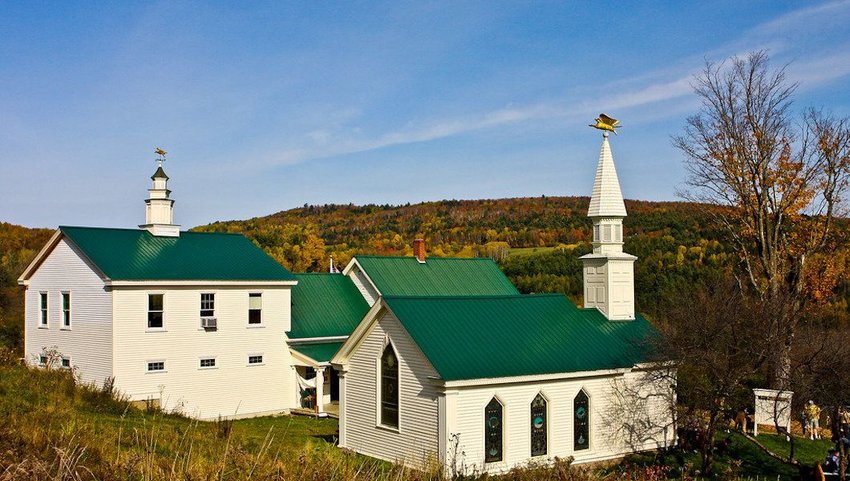
If you want to find a place to go and celebrate the spiritual bond that you have with your dog then you have to check out the Dog Chapel in St. Johnsbury. Artist and author Stephen Huneck created the one-of-a-kind Dog Chapel which thousands of people from around the world visit each year. You can even bring a letter, drawing or photo of your dearly-departed pet to display on the interior walls of the chapel.
Virginia – Washington Dulles International Airport
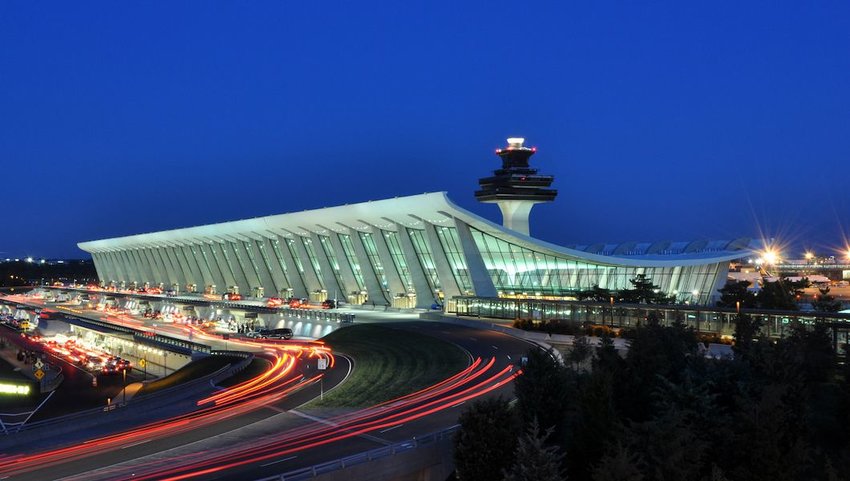
It’s hard to believe that airports have become such works of art. That is why the terminal at Washington Dulles International Airport get so much attention. It is easily recognizable with its glass and concrete terminal bending skyward. It has withstood the test of time and is still a hit nearly sixty years after it was completed.
Washington - Amazon Spheres
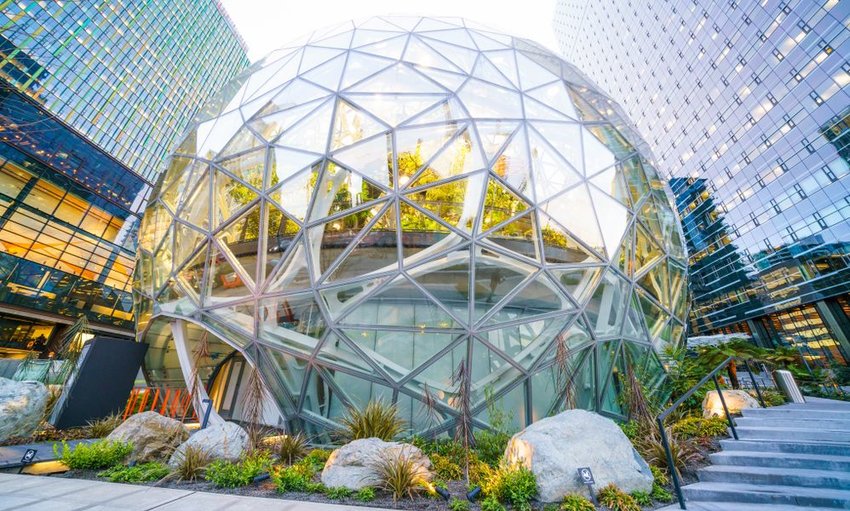
In downtown Seattle on Amazon’s metro campus, you will find a cool fusion of office building and garden. The Amazon Spheres are 65,000-square-foot glass and steel biospheres that contain seating and meeting space for Amazon employees looking for a break from their desk. The spheres are climate controlled to support more than 400 botanical species. Watch out Space Needle, this may be the next icon of Seattle.
West Virginia – The Coal House, Williamson
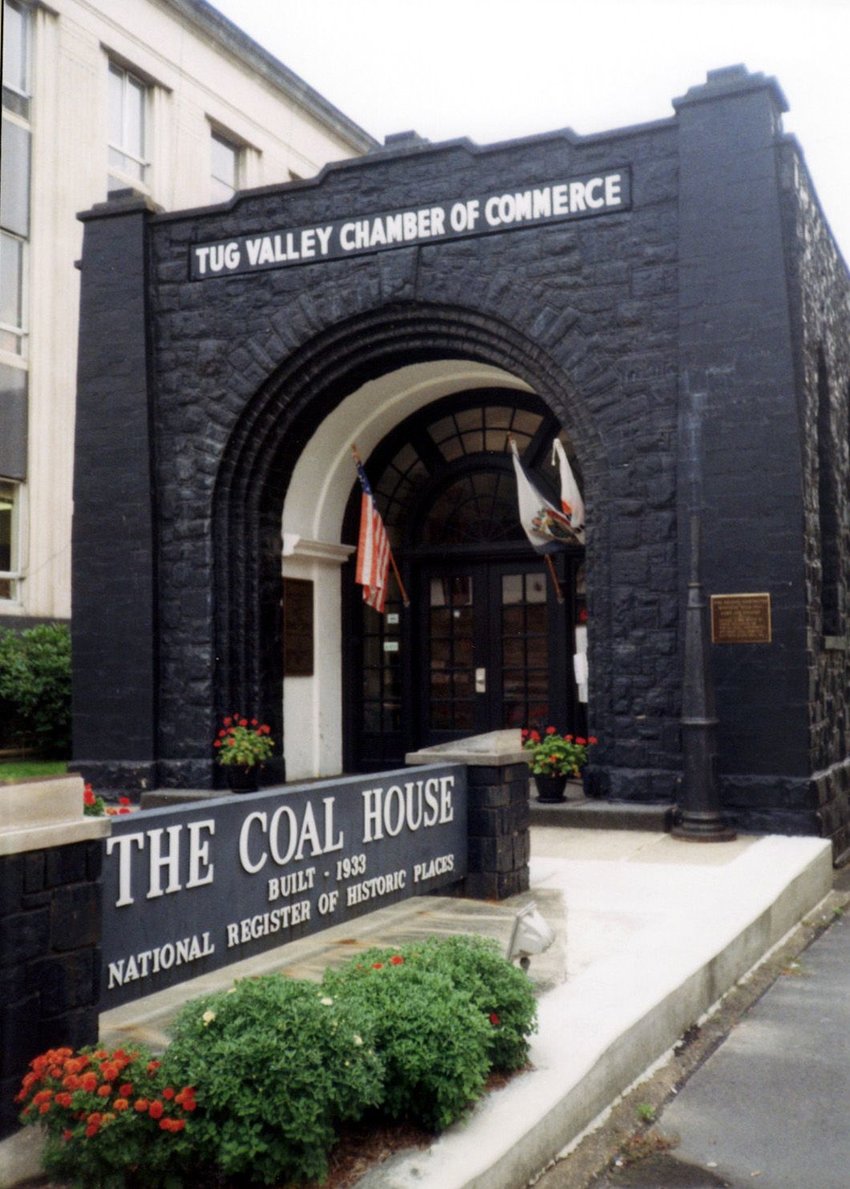 Credit: Badagnani/Wikimedia
Credit: Badagnani/Wikimedia
In Williamson, next to the Mingo County Courthouse, you will find a cool house made entirely out of coal. The coal was quarried as blocks and dressed as stone using 65 tons of coal from the nearby Winifrede Seam and was varnished to resist the weather. The Coal House is the home of the Tug Valley Chamber of Commerce.
Wisconsin - First Unitarian Society Meeting House
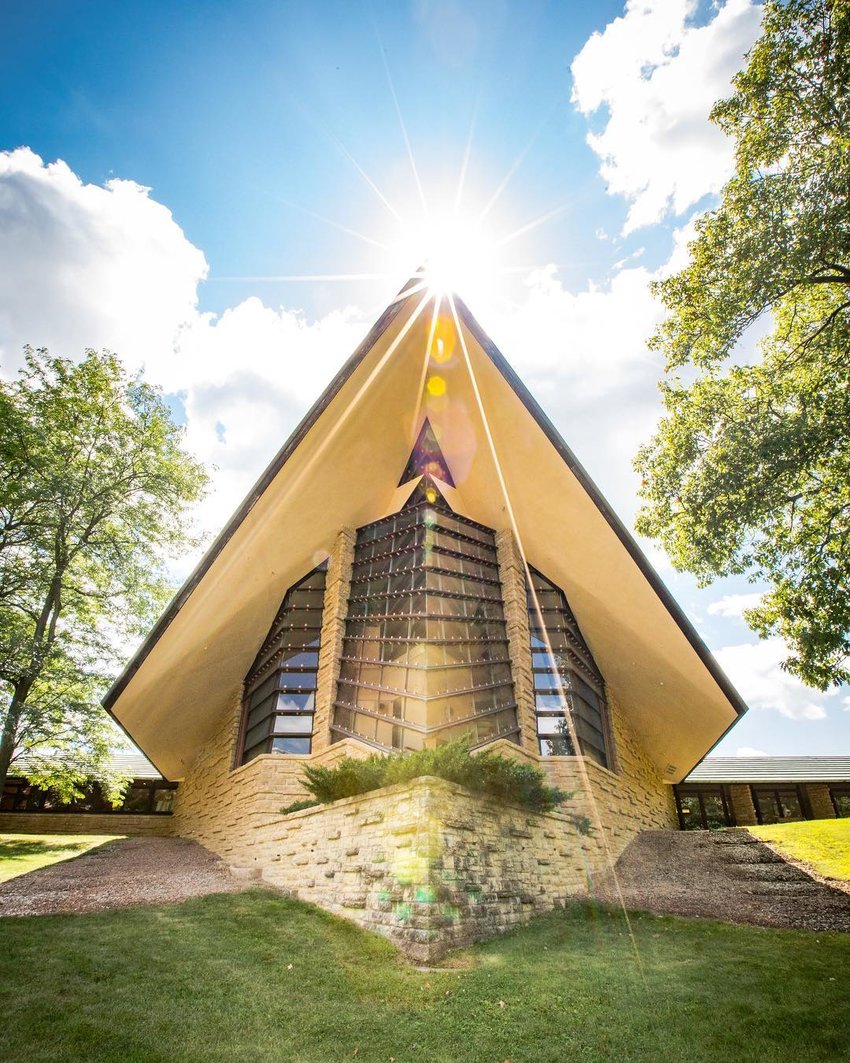 Credit: @rachel.hershberger
Credit: @rachel.hershberger
World-renowned designer Frank Lloyd Wright had a personal interest in designing this meeting house—he was a member of the church. Madison is home to one of the largest Unitarian Universalist congregations in the world. Even cooler, Wright’s parents were its founders. The Meeting House was completed in 1951 and its design can be seen in many ways: as the bow of a ship, a plough slicing through the prairie or as hands folded in prayer.
Wyoming - National Museum of Wildlife Art, Jackson
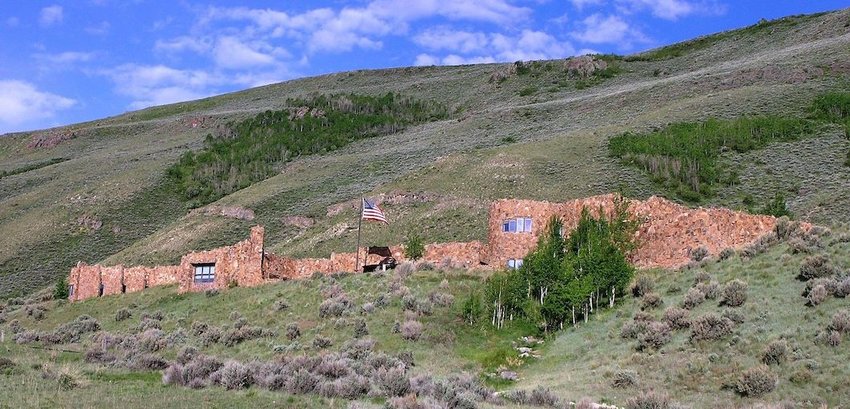
This museum seems to blend in effortlessly with its surroundings which is odd considering the building was inspired by the ruins of Scotland’s Slains Castle. The National Museum of Wildlife Art was built in 1987 and has a mission to collect, display, interpret and preserve the highest quality North American wildlife art. It also sets out to enrich and inspire an appreciation of humanity’s relationship with nature.

